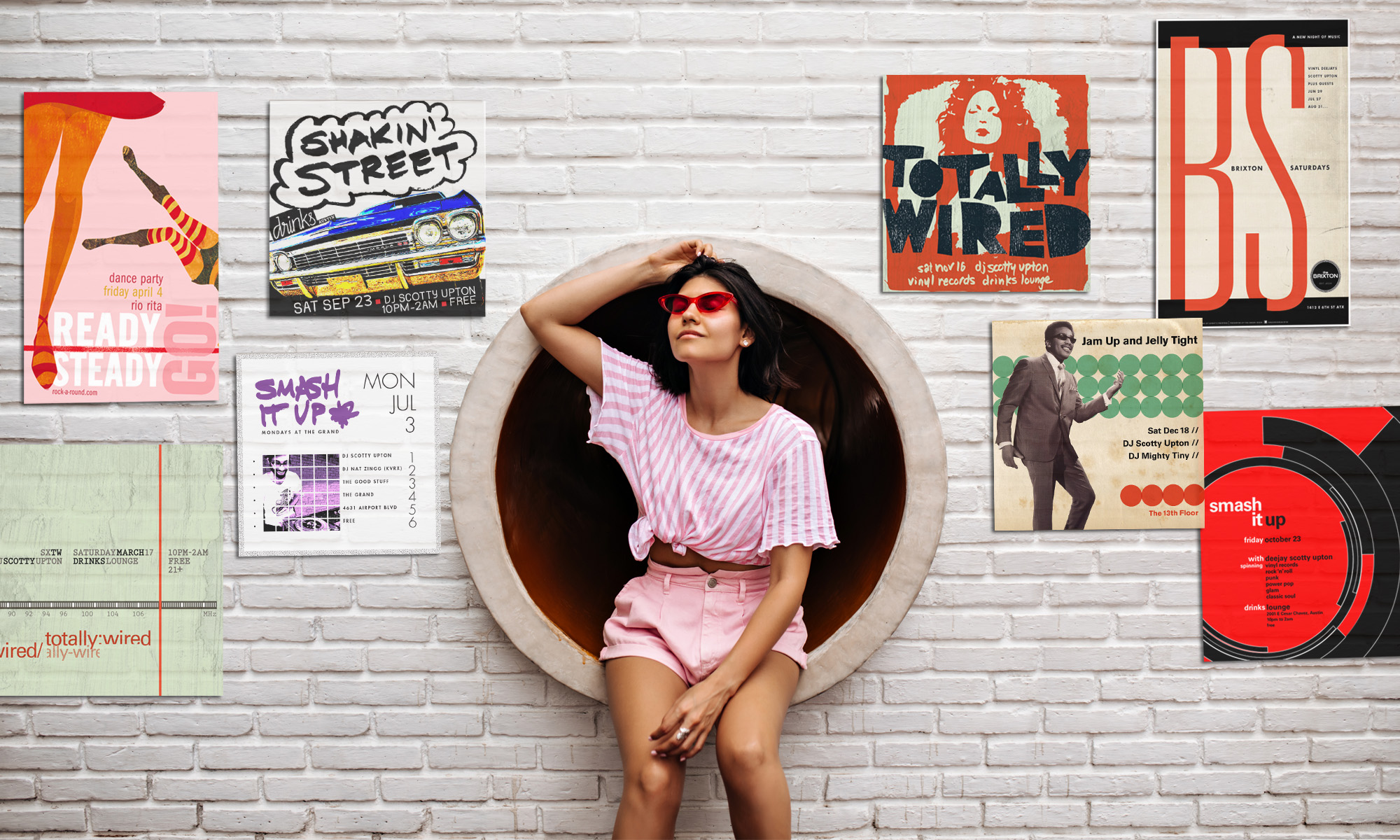 In a warehouse in South Austin, the talented artists of South Side Sanctuary toil away on their computers and at their presses creating fashion that comments on art, music and fashion itself. Leaders Jon Pattillo and Jed Taylor do this for fun, cranking out three to five thousand t-shirts per month of their own design. But their designs are anything but mass-produced. Services also include custom designed screen-printed t-shirts, letter press-printed posters and business cards, banners, murals, and stickers. The duo started out creating merch for a record label and its touring bands. Today the company is housed in a 5,000 square foot location on South Congress Avenue. In addition to the three screen printing presses, SSS operates a 1947 Kluge open-face letterpress.
In a warehouse in South Austin, the talented artists of South Side Sanctuary toil away on their computers and at their presses creating fashion that comments on art, music and fashion itself. Leaders Jon Pattillo and Jed Taylor do this for fun, cranking out three to five thousand t-shirts per month of their own design. But their designs are anything but mass-produced. Services also include custom designed screen-printed t-shirts, letter press-printed posters and business cards, banners, murals, and stickers. The duo started out creating merch for a record label and its touring bands. Today the company is housed in a 5,000 square foot location on South Congress Avenue. In addition to the three screen printing presses, SSS operates a 1947 Kluge open-face letterpress.
During this past year’s SXSW festival, the SSS crew could be seen rolling around town in their super-rad 1979 El Camino “delivery vehicle” equipped with a working screenprinting press in the truck bed.


 The recent concept of prêt-à-porter or “shelf” logos involves the online offering of pre-designed corporate logos with exclusive ownership (i.e., the logo design may not be resold). A few companies have cloned the online business model, but the geniuses at South Africa-based
The recent concept of prêt-à-porter or “shelf” logos involves the online offering of pre-designed corporate logos with exclusive ownership (i.e., the logo design may not be resold). A few companies have cloned the online business model, but the geniuses at South Africa-based  Branding matters. To countries just as much as they do to companies. Just ask former UK prime minister Tony Blair, whose mission in 1999, together with the Foreign Policy Centre, was to sell new model Britain to other countries. “The central message is that Britain’s reality has changed dramatically and that its image must be transformed to reflect this.” The “Cool Britannia” campaign was sniggered at by a nation of cynics, but many Americans today believe a powerful cleanser is needed to remove a very deep stain from the tarnished US image. So
Branding matters. To countries just as much as they do to companies. Just ask former UK prime minister Tony Blair, whose mission in 1999, together with the Foreign Policy Centre, was to sell new model Britain to other countries. “The central message is that Britain’s reality has changed dramatically and that its image must be transformed to reflect this.” The “Cool Britannia” campaign was sniggered at by a nation of cynics, but many Americans today believe a powerful cleanser is needed to remove a very deep stain from the tarnished US image. So  Art, like life, isn’t always pretty. Nor should it be. Russian author Fyodor Dostoyevsky wrote about the rustic, downtrodden everyday man, struggling with all of life’s messy bits, and from this suffering sprang great art. My first job as a teenager was as a busboy and dishwasher at a
Art, like life, isn’t always pretty. Nor should it be. Russian author Fyodor Dostoyevsky wrote about the rustic, downtrodden everyday man, struggling with all of life’s messy bits, and from this suffering sprang great art. My first job as a teenager was as a busboy and dishwasher at a